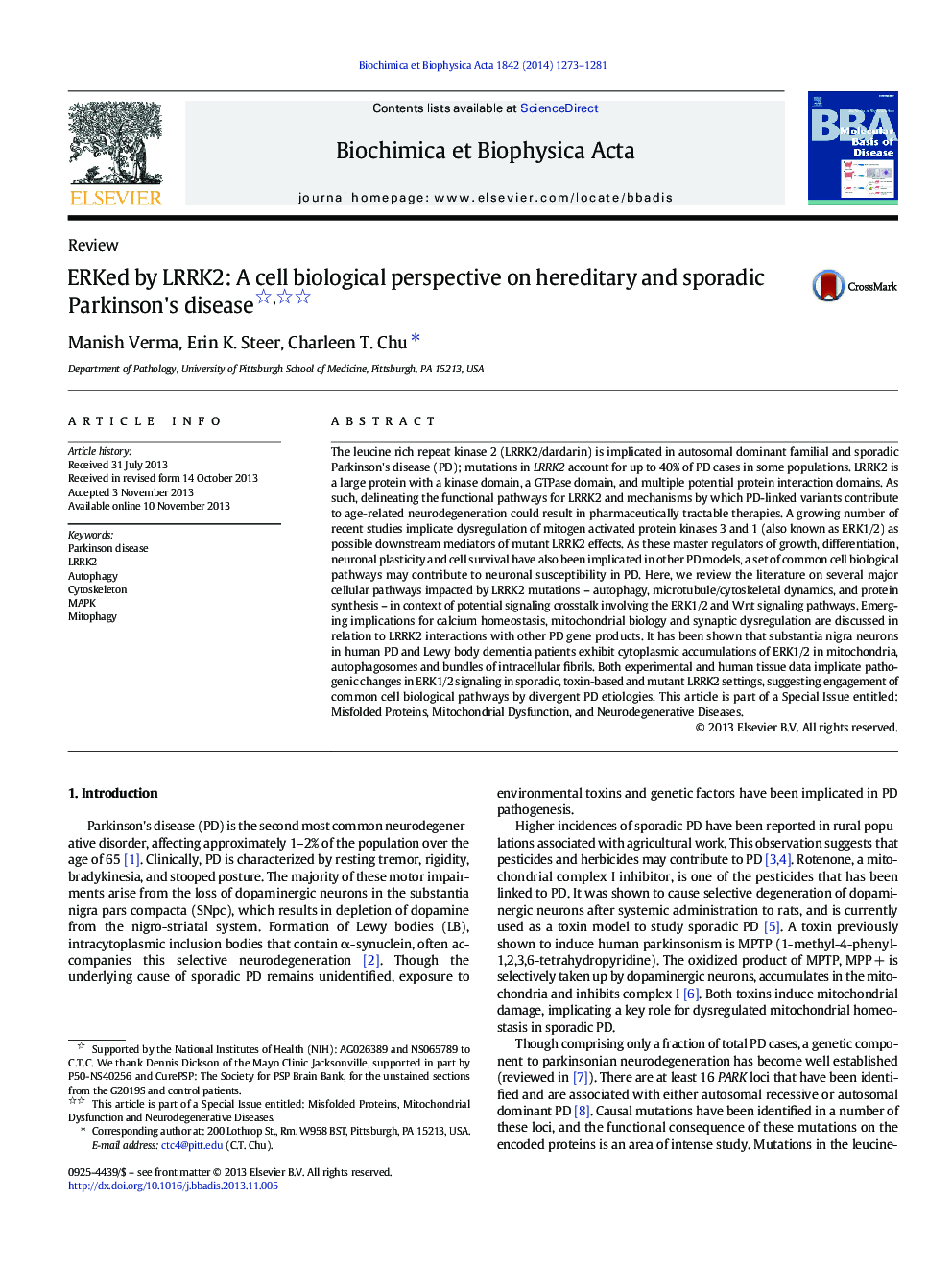| کد مقاله | کد نشریه | سال انتشار | مقاله انگلیسی | نسخه تمام متن |
|---|---|---|---|---|
| 1904753 | 1534657 | 2014 | 9 صفحه PDF | دانلود رایگان |

• Mutations in LRRK2 comprise the most common known cause of Parkinson disease.
• LRRK2 is implicated in regulating autophagy, cytoskeletal dynamics and protein synthesis.
• LRRK2 mediates some of these effects through interaction with the ERK1/2 and Wnt signaling pathways.
• New data implicating LRRK2 in calcium homeostasis, mitophagy and synaptic vesicle dynamics are reviewed.
• Common cell biological pathways may underlie sporadic, toxin-based and familial PD.
The leucine rich repeat kinase 2 (LRRK2/dardarin) is implicated in autosomal dominant familial and sporadic Parkinson's disease (PD); mutations in LRRK2 account for up to 40% of PD cases in some populations. LRRK2 is a large protein with a kinase domain, a GTPase domain, and multiple potential protein interaction domains. As such, delineating the functional pathways for LRRK2 and mechanisms by which PD-linked variants contribute to age-related neurodegeneration could result in pharmaceutically tractable therapies. A growing number of recent studies implicate dysregulation of mitogen activated protein kinases 3 and 1 (also known as ERK1/2) as possible downstream mediators of mutant LRRK2 effects. As these master regulators of growth, differentiation, neuronal plasticity and cell survival have also been implicated in other PD models, a set of common cell biological pathways may contribute to neuronal susceptibility in PD. Here, we review the literature on several major cellular pathways impacted by LRRK2 mutations – autophagy, microtubule/cytoskeletal dynamics, and protein synthesis – in context of potential signaling crosstalk involving the ERK1/2 and Wnt signaling pathways. Emerging implications for calcium homeostasis, mitochondrial biology and synaptic dysregulation are discussed in relation to LRRK2 interactions with other PD gene products. It has been shown that substantia nigra neurons in human PD and Lewy body dementia patients exhibit cytoplasmic accumulations of ERK1/2 in mitochondria, autophagosomes and bundles of intracellular fibrils. Both experimental and human tissue data implicate pathogenic changes in ERK1/2 signaling in sporadic, toxin-based and mutant LRRK2 settings, suggesting engagement of common cell biological pathways by divergent PD etiologies. This article is part of a Special Issue entitled: Misfolded Proteins, Mitochondrial Dysfunction, and Neurodegenerative Diseases.
Journal: Biochimica et Biophysica Acta (BBA) - Molecular Basis of Disease - Volume 1842, Issue 8, August 2014, Pages 1273–1281